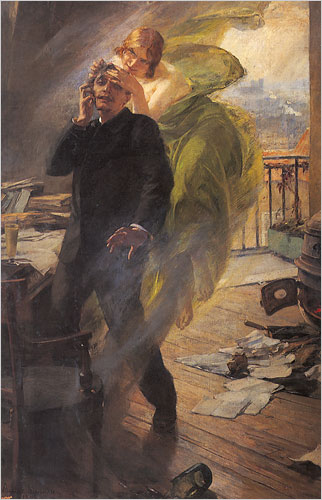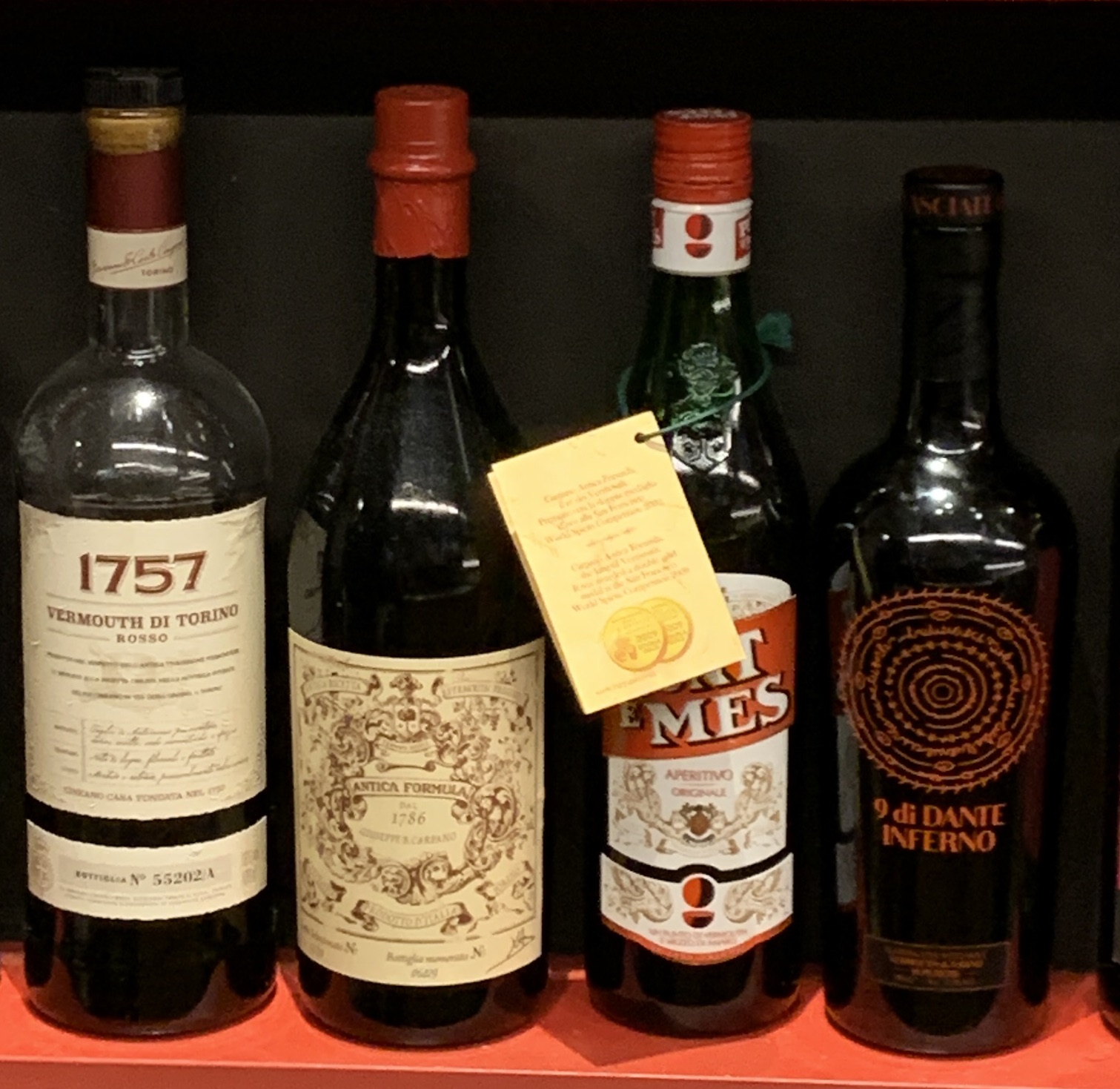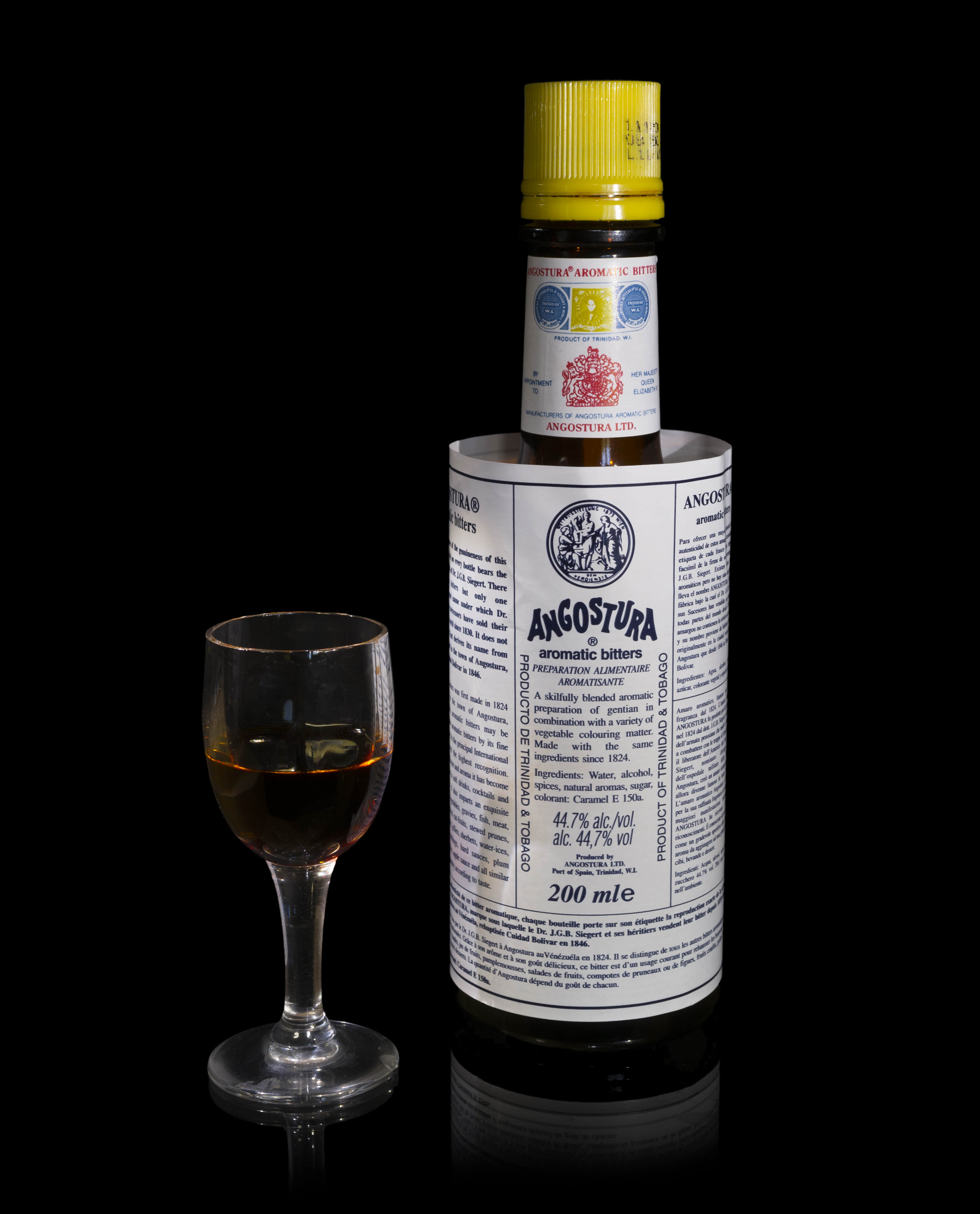|
Bäsk
Bäsk is a Swedish-style liquor flavored with wormwood ("malört" in Swedish) or anise. Sweden is one of the few countries that has never banned absinthe or other wormwood-flavored liquors. ''Bäsk'' is an old alternative spelling of the word ''besk'' which means "bitter". In the United States, the Chicago-based brand Jeppson's Malört is one of the most well-known versions of the liquor. Bäsk is said to be good for digestion, and therefore is traditionally associated with fatty foods. See also *Vermouth Vermouth (, ) is an aromatized fortified wine, flavoured with various botanicals (roots, barks, flowers, seeds, herbs, and spices) and sometimes colored. The modern versions of the beverage were first produced in the mid- to late 18th centur ... References Distilled drinks Swedish culture Bitters Swedish distilled drinks {{distilled-drink-stub ... [...More Info...] [...Related Items...] OR: [Wikipedia] [Google] [Baidu] |
Artemisia Absinthium
''Artemisia absinthium'' (wormwood, grand wormwood, absinthe, absinthium, absinthe wormwood, mugwort, wermout, wermud, wormit, wormod) is a species of ''Artemisia'', native to temperate regions of Eurasia and North Africa, and widely naturalized in Canada and the northern United States. It is grown as an ornamental plant and is used as an ingredient in the spirit absinthe and some other alcoholic beverages. Etymology ''Artemisia'' comes from Ancient Greek ἀρτεμισία, from Ἄρτεμις (Artemis). In Hellenistic culture, Artemis was a goddess of the hunt, and protector of the forest and children. The name ''absinthum'' comes from the Ancient Greek ἀψίνθιον, meaning the same. An alternative derivation is that the genus was named after Queen Artemisia, who was the wife and sister of Mausolus, ruler of Caria. The word "wormwood" may come from Middle English ''wormwode'' or ''wermode''. Webster's Third New International Dictionary attributes the etymology to Old ... [...More Info...] [...Related Items...] OR: [Wikipedia] [Google] [Baidu] |
Brännvin
Brännvin is a Swedish liquor distilled from potatoes, grain, or (formerly) wood cellulose. It can be plain and colourless, or flavoured with herbs and spices. Beverages labelled ''brännvin'' are usually plain and have an alcohol content between 30% and 38%. The word ''brännvin'' means "burn (distilled) wine". It is cognate with English ''brandyine', Norwegian ''brennevin'', Danish ''brændevin'', Dutch ''brandewijn'', Finnish ''Viina'', German '' Branntwein'', and Icelandic ''brennivín''. A small glass of brännvin is called a ''snaps'' (cf. German schnapps), and may be accompanied by a ''snapsvisa'', a drinking song. Outside Scandinavia In the US, a Chicago producer makes a bitter brännvin (beskbrännvin), called Jeppson's Malört. "Malört" () is the Swedish word for the plant ''Artemisia absinthium'', wormwood, often used as an ingredient in absinthe. In Scandinavian culture Brännvin was central to the semi-mythical world in the songs of Sweden's bard, Carl Michael Bel ... [...More Info...] [...Related Items...] OR: [Wikipedia] [Google] [Baidu] |
Anise
Anise (; '), also called aniseed or rarely anix is a flowering plant in the family Apiaceae native to Eurasia. The flavor and aroma of its seeds have similarities with some other spices and herbs, such as star anise, fennel, licorice, and tarragon. It is widely cultivated and used to flavor food, candy, and alcoholic drinks, especially around the Mediterranean. Description Anise is an herbaceous annual plant growing to or more. The leaves at the base of the plant are simple, long and shallowly lobed, while leaves higher on the stems are feathery pinnate, divided into numerous small leaflets. The flowers are either white or yellow, approximately in diameter, produced in dense umbels. The fruit is an oblong dry schizocarp, long, usually called "aniseed".Anise (''Pimpinella anisum'' L.) from Gernot Katze ... [...More Info...] [...Related Items...] OR: [Wikipedia] [Google] [Baidu] |
Absinthe
Absinthe (, ) is an anise-flavoured spirit derived from several plants, including the flowers and leaves of ''Artemisia absinthium'' ("grand wormwood"), together with green anise, sweet fennel, and other medicinal and culinary herbs. Historically described as a highly alcoholic spirit, it is 45–74% Alcohol by volume, ABV or 90–148 proof US. Absinthe traditionally has a natural green color, but may also be colorless. It is commonly referred to in historical literature as ' ("the green fairy"). It is sometimes mistakenly referred to as a liqueur, but is not traditionally bottled with added sugar, so is classified as a spirit. Absinthe is traditionally bottled at a high level of alcohol by volume, but it is normally diluted with water before being consumed. Absinthe originated in the canton of Neuchâtel in Switzerland in the late 18th century. It rose to great popularity as an alcoholic drink in late 19th- and early 20th-century France, particularly among Parisian artists and ... [...More Info...] [...Related Items...] OR: [Wikipedia] [Google] [Baidu] |
Chicago
(''City in a Garden''); I Will , image_map = , map_caption = Interactive Map of Chicago , coordinates = , coordinates_footnotes = , subdivision_type = Country , subdivision_name = United States , subdivision_type1 = State , subdivision_type2 = Counties , subdivision_name1 = Illinois , subdivision_name2 = Cook and DuPage , established_title = Settled , established_date = , established_title2 = Incorporated (city) , established_date2 = , founder = Jean Baptiste Point du Sable , government_type = Mayor–council , governing_body = Chicago City Council , leader_title = Mayor , leader_name = Lori Lightfoot ( D) , leader_title1 = City Clerk , leader_name1 = Anna Valencia ( D) , unit_pref = Imperial , area_footnotes = , area_tot ... [...More Info...] [...Related Items...] OR: [Wikipedia] [Google] [Baidu] |
Jeppson's Malört
Jeppson's Malört is a brand of bäsk liquor, extremely low in thujone, introduced in the 1930s, and long produced by Chicago's Carl Jeppson Company. In 2018, as its last employee was retiring, the brand was sold to CH Distillery of Chicago's Pilsen neighborhood. Jeppson's Malört is named after Carl Jeppson, a Swedish immigrant who first distilled and popularized the liquor in Chicago. (literally ''moth herb'') is the Swedish word for wormwood, which is the key ingredient in a bäsk, a bitter-flavored type of Swedish brännvin. Malört is known for its bitter taste. It can be found in some Chicago-area taverns and liquor stores, and is growing in popularity there, but is hard to find elsewhere in the United States. History In the 1930s Carl Jeppson, a Swedish immigrant to Chicago, began marketing his homemade brew. He sold it from door to door for medicinal and other purposes, and one legend says he preferred the strong taste because years of smoking had dulled his taste-bu ... [...More Info...] [...Related Items...] OR: [Wikipedia] [Google] [Baidu] |
Digestion
Digestion is the breakdown of large insoluble food molecules into small water-soluble food molecules so that they can be absorbed into the watery blood plasma. In certain organisms, these smaller substances are absorbed through the small intestine into the blood stream. Digestion is a form of catabolism that is often divided into two processes based on how food is broken down: mechanical and chemical digestion. The term mechanical digestion refers to the physical breakdown of large pieces of food into smaller pieces which can subsequently be accessed by digestive enzymes. Mechanical digestion takes place in the mouth through mastication and in the small intestine through segmentation contractions. In chemical digestion, enzymes break down food into the small molecules the body can use. In the human digestive system, food enters the mouth and mechanical digestion of the food starts by the action of mastication (chewing), a form of mechanical digestion, and the wetting contact o ... [...More Info...] [...Related Items...] OR: [Wikipedia] [Google] [Baidu] |
Vermouth
Vermouth (, ) is an aromatized fortified wine, flavoured with various botanicals (roots, barks, flowers, seeds, herbs, and spices) and sometimes colored. The modern versions of the beverage were first produced in the mid- to late 18th century in Turin, Italy. While vermouth was traditionally used for medicinal purposes, it was later served as an apéritif, with fashionable cafés in Turin serving it to guests around the clock. In the late 19th century, it became popular with bartenders as a key ingredient for cocktails, such as the martini, the Manhattan, the Rob Roy, and the Negroni. In addition to being consumed as an apéritif or cocktail ingredient, vermouth is sometimes used as an alternative to white wine in cooking. Historically, there have been two main types of vermouth: sweet and dry. Responding to demand and competition, vermouth manufacturers have created additional styles, including extra-dry white, sweet white (blanc or bianco), red (rosso), amber (ambre), an ... [...More Info...] [...Related Items...] OR: [Wikipedia] [Google] [Baidu] |
Distilled Drinks
Liquor (or a spirit) is an alcoholic drink produced by distillation of grains, fruits, vegetables, or sugar, that have already gone through alcoholic fermentation. Other terms for liquor include: spirit drink, distilled beverage or hard liquor. The distillation process concentrates the liquid to increase its alcohol by volume. As liquors contain significantly more alcohol (ethanol) than other alcoholic drinks, they are considered 'harder'; in North America, the term ''hard liquor'' is sometimes used to distinguish distilled alcoholic drinks from non-distilled ones, whereas the term ''spirits'' is more common in the UK. Some examples of liquors include vodka, rum, gin, and tequila. Liquors are often aged in barrels, such as for the production of brandy and whiskey, or are infused with flavorings to form a flavored liquor such as absinthe. While the word ''liquor'' ordinarily refers to distilled alcoholic spirits rather than beverages produced by fermentation alone, i ... [...More Info...] [...Related Items...] OR: [Wikipedia] [Google] [Baidu] |
Swedish Culture
The Culture of Sweden has long been known for the accomplishments of a wide variety of artists. Prehistoric Sweden was the source of Norse culture, dominant in all of Scandinavia for hundreds of years, and the Temple at Uppsala in Sweden was a site of pilgrimage for Scandinavian peoples take the Aesir. Western culture mostly recalls Vikings of Norway and Denmark for invading France, England, Scotland and Ireland, but Swedish Vikings influenced Byzantine culture, where they were known as Varangians, and are also known for founding the Kievan state. Of the country's many monarchs, a few of the more powerful ones, such as King Gustav III and Queen Christina, have been exceptionally important to its cultural development. In modern times, many Swedes have been internationally celebrated for their cultural work, among them Jenny Lind, PewDiePie, August Strindberg, Ingrid Bergman, Ingmar Bergman and ABBA. Automotive designs such as those of Volvo and Saab have also been wide ... [...More Info...] [...Related Items...] OR: [Wikipedia] [Google] [Baidu] |
Bitters
Bitters (plural also ''bitters'') is traditionally an alcoholic preparation flavored with botanical matter for a bitter or bittersweet flavor. Originally, numerous longstanding brands of bitters were developed as patent medicines, but now are sold as digestifs, sometimes with herbal properties, and as cocktail flavorings. Since cocktails often contain sour and sweet flavors, bitters are used to engage another primary taste and thereby balance out the drink and make it more complex, giving it a more complete flavor profile. Ingredients The botanical ingredients used historically in preparing bitters have consisted of aromatic herbs, bark, roots, and/or fruit for their flavor and medicinal properties. Some of the more common ingredients are cascarilla, cassia (Chinese cinnamon), gentian, orange peel, and cinchona bark. Most bitters contain both water and alcohol, the latter of which functions as a solvent for botanical extracts as well as a preservative. The alcoholic stre ... [...More Info...] [...Related Items...] OR: [Wikipedia] [Google] [Baidu] |






